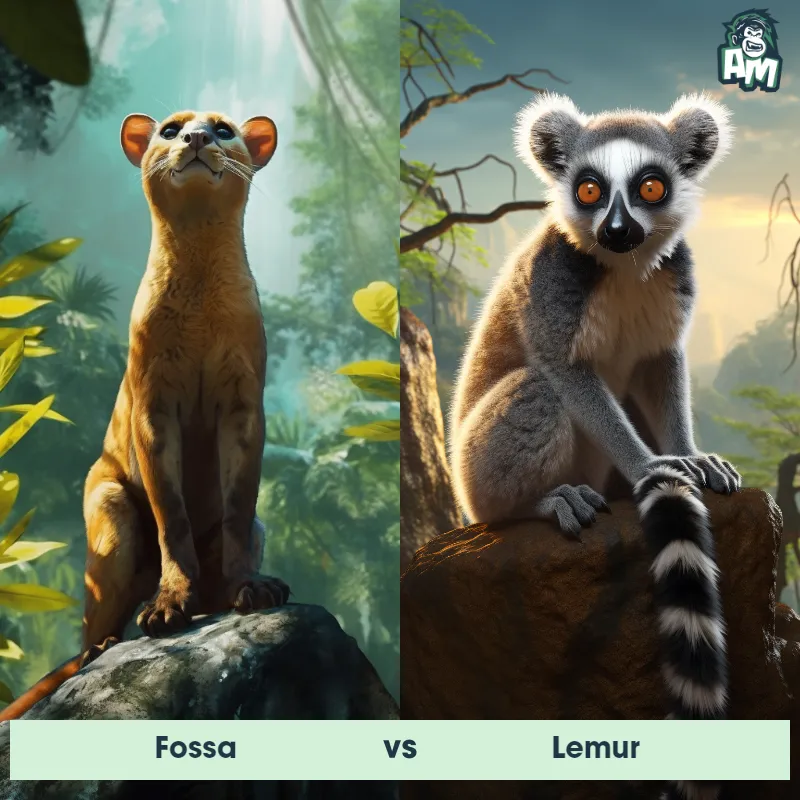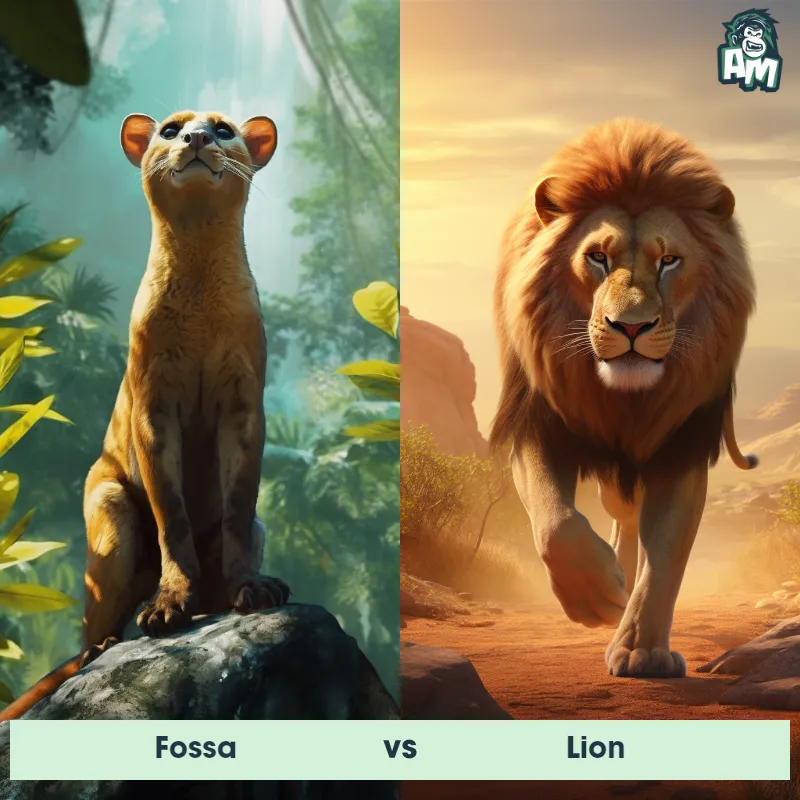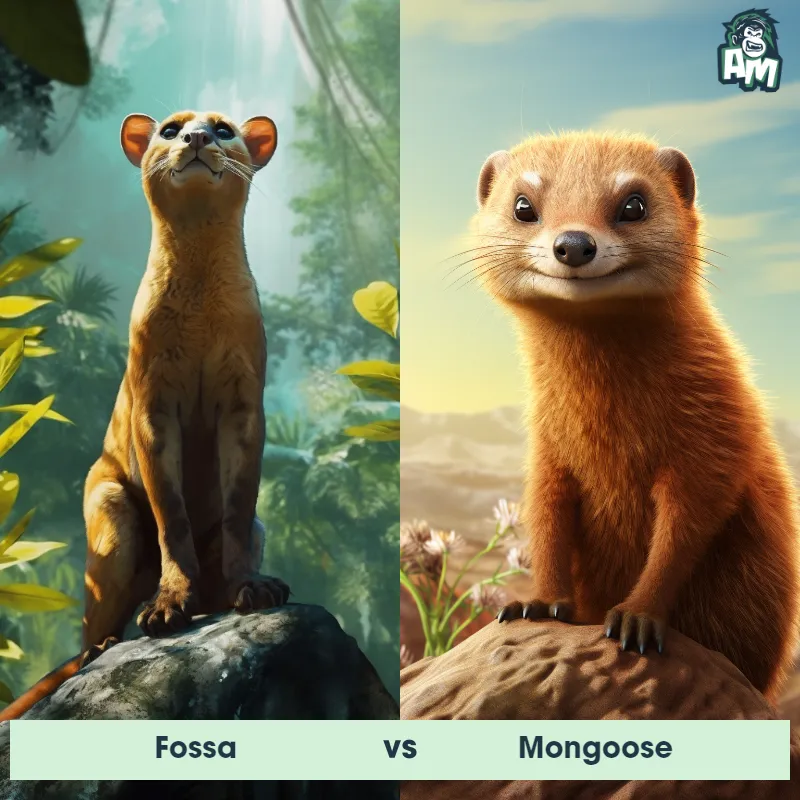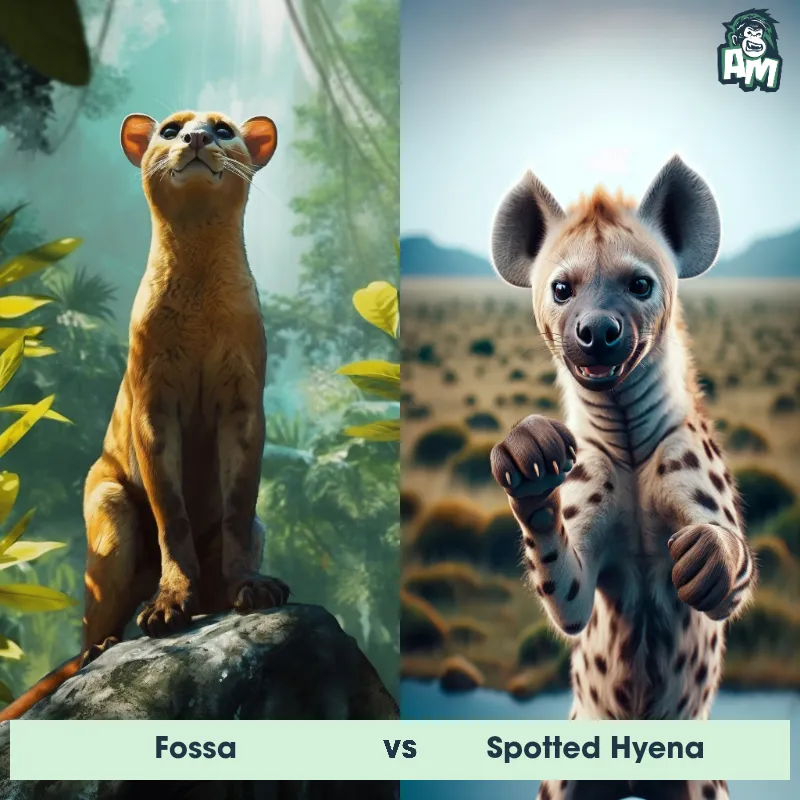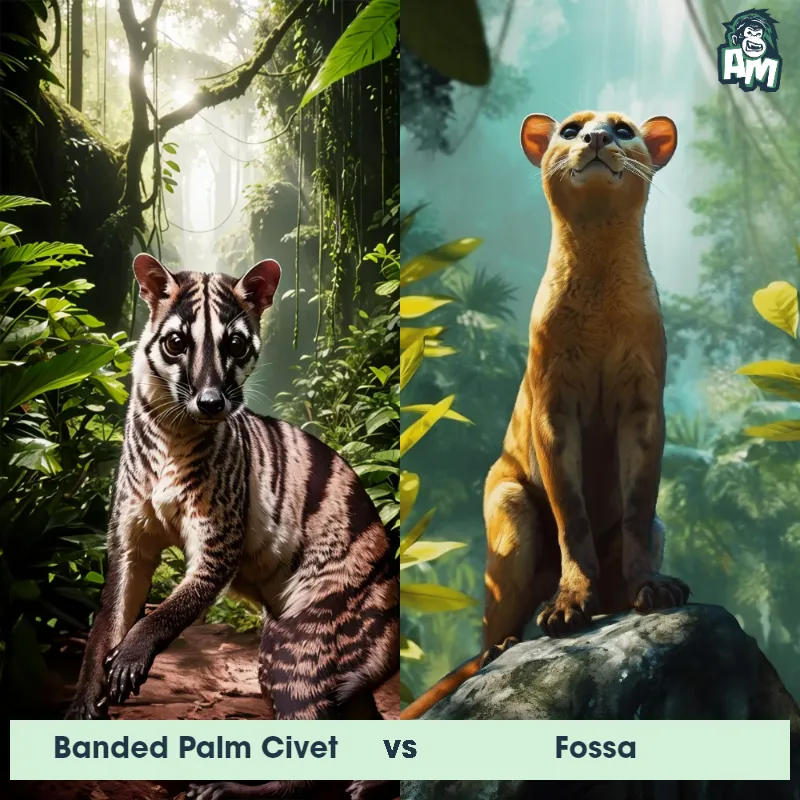The Fossa
The Fossa, also known as Cryptoprocta ferox, is a unique and fascinating carnivorous mammal found only in the tropical rainforests of Madagascar. It is the largest predator on the island and is known for its sleek and slender body. The Fossa has a long tail that makes up half of its total body length of up to 6.5 feet. Its fur is short and coarse, ranging in color from brown to reddish-brown. It has a pointed snout, sharp teeth, and retractable claws that help it navigate through the trees. This solitary and agile creature has a slender build, allowing it to easily climb trees and move swiftly through the forest canopy.
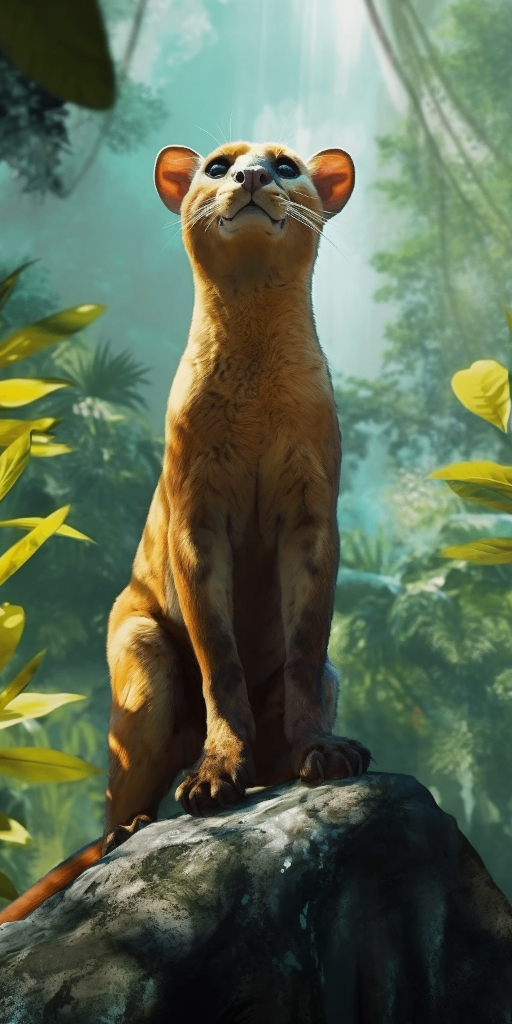
| Fossa | |
|---|---|
| Size | Up to 6 feet (1.8 meters) |
| Weight | Up to 26 pounds (12 kilograms) |
| Speed | Speed: 20 mph (32.19 km/hr) |
| Key Strength | Powerful jaws and sharp claws |
| Biggest Weakness | Short legs and relatively small size |
| Scientific Name | Cryptoprocta ferox |
| Family | Eupleridae |
| Habitat | Forests |
| Geography | Madagascar |
| Diet | Carnivorous, primarily lemurs |
| Lifespan | 15 years - 20 years |

The Fossa
The Fossa, also known as Cryptoprocta ferox, is a unique and fascinating carnivorous mammal found only in the tropical rainforests of Madagascar. It is the largest predator on the island and is known for its sleek and slender body. The Fossa has a long tail that makes up half of its total body length of up to 6.5 feet. Its fur is short and coarse, ranging in color from brown to reddish-brown. It has a pointed snout, sharp teeth, and retractable claws that help it navigate through the trees. This solitary and agile creature has a slender build, allowing it to easily climb trees and move swiftly through the forest canopy.
Fun Fact: One fascinating fact about the Fossa is that it is considered one of the most skillful climbers among carnivores, capable of leaping from tree to tree and even hunting lemurs and birds in the treetops, showcasing its incredible adaptability and agility.
| Fossa | |
|---|---|
| Size | Up to 6 feet (1.8 meters) |
| Weight | Up to 26 pounds (12 kilograms) |
| Speed | Speed: 20 mph (32.19 km/hr) |
| Key Strength | Powerful jaws and sharp claws |
| Biggest Weakness | Short legs and relatively small size |
| Scientific Name | Cryptoprocta ferox |
| Family | Eupleridae |
| Habitat | Forests |
| Geography | Madagascar |
| Diet | Carnivorous, primarily lemurs |
| Lifespan | 15 years - 20 years |
Fossa Matchups
We use AI to simulate matchups between the Fossa and other animals. Our simulation considers size, strength, and natural predatory behaviors to determine the most likely outcome.

Can't find the Matchup you want?
Create Your Own MatchupFossa: Diet, Predators, Aggression, and Defensive Behaviors
What do Fossas eat?
Fossas are carnivorous predators and primarily feed on lemurs, birds, reptiles, and small mammals. Fossa are also known to consume insects and fruit when prey is scarce. Fossas have sharp teeth and strong jaws that allow them to tear through tough hides and bones of their prey.
Do Fossas have any predators?
Despite being top predators in their ecosystem, Fossas do have potential predators, such as larger carnivores like crocodiles, pythons, and even other Fossas. Young Fossas are especially vulnerable to being preyed upon by larger predators.
Are Fossas aggressive?
Fossas are solitary and territorial animals, and Fossa can exhibit aggressive behavior, especially towards other Fossas of the same gender. However, Fossa are generally not aggressive towards humans unless provoked, and tend to avoid confrontations whenever possible.
Do Fossas fight?
Fossas are known to engage in territorial disputes and fights, especially during mating season when competition for mates is high. Male Fossas will often fight each other to establish dominance and secure mating opportunities with females. These fights can be intense and involve biting, scratching, and vocalizations.
How do Fossas defend themselves?
Fossas have several defense mechanisms to protect themselves from potential threats. When feeling threatened, Fossa may emit strong-smelling secretions from their anal glands to deter predators or rivals. Fossas are also agile climbers and can escape into trees to avoid danger.
What is the Fossa's biggest weakness in a fight?
Despite being skilled predators, Fossas have relatively slender builds and are not as strong as some of their larger competitors. Their smaller size and lack of brute force can make them vulnerable in fights against larger predators or when outnumbered. Additionally, their solitary nature means Fossa may not have the same level of support as social species when faced with threats.
Fun Fact: The Fossa has a unique way of marking its territory by using scent glands located on its chest and tail, which it rubs against trees to leave its distinct scent, allowing other Fossas to know that a particular area is already claimed.
Fun Fact: While the Fossa may physically resemble a large cat, it is actually more closely related to the mongoose family, sharing common ancestors with other carnivores like dogs and hyenas. This evolutionary lineage sets the Fossa apart from its feline appearance and behavior.



